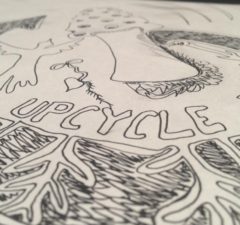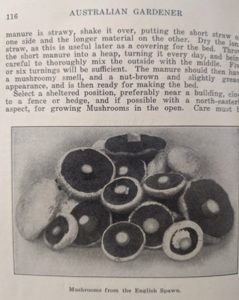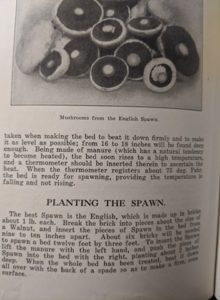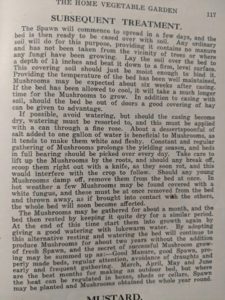Well, I’ve been meaning to share this more widely and now that home entertainment is the new “in thing” during this crazy Corona Covid19 season ….and cooler weather is just around the corner, the time is now!
I’ve tried my hand, successfully at growing mushrooms from a kit, much later on I’ve done a couple of rounds of oyster mushrooms into wood logs (these should be fresh and still have good bark on them). But then I realised that I much prefer FIELD MUSHROOMS!!
This is totally a sensible thing to try for those of you who have ample access to horse poo, including those who live a bit close to horse riding schools or agistments… they still need to get rid of their waste materials or risk the local ground water.
And who like to eat mushrooms. So not my kids lol… but still we used to make a killer mushroom tarragon soup and its worth making again.
Let’s be honest, I haven’t tried it myself but Paul Stamets made it sound easy in his Mycelium Running book so I’m cautiously optimistic after good success with oyster mushrooms on log culture.
I have this beautiful old book at home called the Australian Gardener that includes some really really basic gardening from the nearly one hundred years ago. They didn’t have Bunnings, so I reckon you’re about right during lock down in those countries where they would let you swing by the back end of the horse stables and the grocery store!
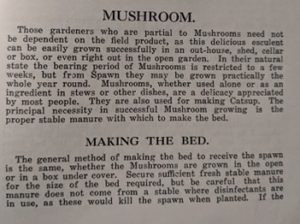
In other words, sheltered morning sun in winter.
You can order spawn online (our rules atm would mean probably it would have to be from within the state) or you can try one of the following approaches…
1. Take a spent mushroom kit, remove any contaminated spots and plant some healthy spawn.
2, Get some field mushrooms from the store, perhaps ones that are mostly closed, cut them up with good hygiene and use their stems to plant the bed. Note that the tissue inside your mushroom is still alive that the parts that haven’t touched the air are hygienic… so you can hope that the base of the stem or the inside of the cap will grow.
2. Spore prints. Recommend you read Stamet’s book as mentioned above but the general gist (from memory) is to put the sterile spores into very clean water with some sugar and salt, leave for one-two days (with some good stirring) to begin to grow and then water your prepared sterile bed with this alive mix.
Ways to quickly sterilise your equipment might include a container of hot water (over 60 degrees C), a lighter or alcohol and then a lighter. Gloves might be a good idea but equally just use some tweezers (don’t use your hands directly to touch the inside of the mushroom or spore prints) and dump into a nice clean jar. Work under an extractor fan or in a sterile box with arm holes if you’re really excited.
If your risk profile is a bit more cowboy style, don’t bother with all of that but work quickly and cleanly and direct your breath away from your working surfaces.
Some contamination in your outdoors mushroom bed might occur but the speed of composting (with heat) and subsequently your hygienic technique when handling the spawn are what will make the difference.
Rapidly growing spawn is healthy spawn.
So do let me know how you go! If we’re still on some level of ‘lock down’ this winter it should be an interesting project.
Newer techniques are well covered by Milkwood and there are plenty of locals who are growing mushrooms in jars and laundry baskets and big tubs. Have fun!
